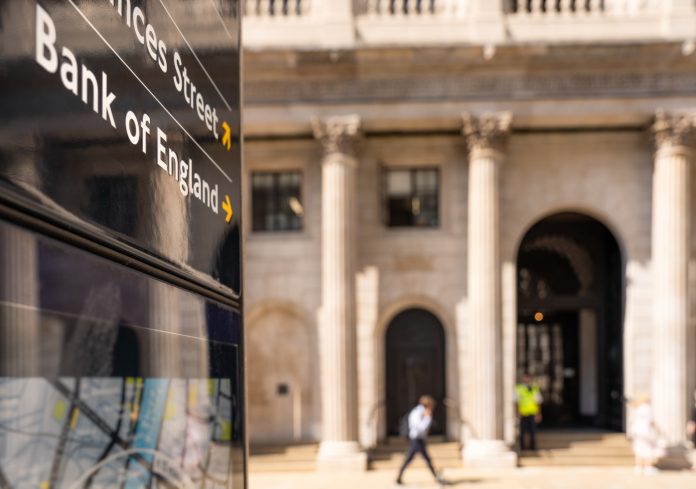The government is currently supporting the BoE’s stance of continuing to raise interest rates to stamp out UK inflation – but is it working?
Last week the Bank of England (BoE) raised the interest rate by 0.5 percentage points to take the base rate to 5% (1). This has been the 13th consecutive time since December 2021 that the BoE has raised interests rates in order to curb UK inflation which now stands at 8.7% (2).
One of Rishi Sunak’s five pledges is to half inflation by the end of the year and the BoE’s target inflation rate continues to be 2%. The government is currently supporting the BoE’s stance of continuing to raise interest rates to stamp out inflation.
We find ourselves in this situation of constantly rising interest rates and significantly worsening cost of living crisis.
There are two important questions to reflect on in this situation, the first question is, given that the current inflation is caused by global price increase is there a limit on how effective will raising UK interest rates be?
The second question is, how long will the BoE continue to raise interest rates?
UK’s current economic performance
The war in Ukraine and the economic fallout of Covid-19 have led to a global economic crisis. In the UK this has been exacerbated by Brexit and 13 years of government austerity measures.
As a result, the scale of the crisis in the UK is far worse when compared to most of the OECD countries and certainly among those in the group of G-7.
UK GDP has contracted by 0.4% between the fourth quarter of 2019 and the third quarter of 2022, versus 3.7% growth in the OECD area during the same period. It is also the only G-7 economy to have shrunk in that time.
The economy continues to grow at a very sluggish rate of 0.2% annually in 2023, with a budget deficit of 4.8% and a current account deficit of 3%, which is worse than that of Greece or Argentina. The debt to GDP ratio rose over 100%, first time since 1961 (3).
Impact of rising interest rates on UK Households
Due to a further 0.5 percentage point increase in interest rates last week by the Bank of England (BoE) the average mortgage rates rose exponentially. An average variable interest rate for a mortgage stands now at 8%(4).
Rishi Sunak has announced that there will be no Treasury support for struggling mortgage holders and has urged the banks to support home-owners. However banks are anticipating UK inflation to remain high and are pulling mortgage deals and raising rates.
Renters will bear the brunt of increasing mortgage rates (5). Landlords are seeing the mortgage payments on their buy-to-let properties go up and are subsequently increasing their rents to maintain profits.

This could also lead to a mass departure of landlords adding to shortage in rental properties and further raising rents.
Private rental prices rose by 4.7% in the UK in the 12 months to February 2023 (6). This was an increase from the January figure which stood at 4.4%.
Rents are increasing throughout the UK, with the partial exception being Scotland as the rental market there is more regulated in favour of tenants (rent rises are controlled and evictions are restricted) The Cost of Living (Tenant Protection) Scotland Bill passed on 6 October 2022).
The bond markets are also affected – The Economist estimates that when UK inflation is at 2% the profit returned on a 10-year government bond will be worth of 82% of its original value, whereas when inflation is 4%, that figure falls to 68%. If the bond matures in 30 years with a 4% inflation, then it will return 31% of its original value (7).
Is the BoE plan working for UK inflation?
Despite 13 consecutive interest rate rises since December 2021, inflation remains at 8.7% and core inflation, which excludes food and energy, jumped stubbornly to 7.1% from 6.8% in May. Service prices were also up by 7.4% the highest in 30 years (8). Rate rises have not been able to curb consumer demand either, in actual fact there has been increased.
In fact consumer demand showed an unexpected resilience with retail sales rising 0.3% between April and May, far above the 0.2% contraction predicted by economists (9). So, to answer the first question I posed at the beginning of this piece, we can see that it has not been as effective as could be.
Even when we compare UK inflation to that of other countries which have implemented similar interest rate rises, we fall short. The current inflation rates in France, Germany and the US are 6%, 6.3% and 2.7% respectively and much lower than that of the UK.
The current inflation rates in France, Germany and the US are much lower than that of the UK
To answer the second question there are two choices ahead of us. First, the BoE could continue to address the issue of inflation with monetary tightening as it currently does until it hits its target inflation rate of 2%.
There are parallels to be drawn between BoE policy and a Volcker-type policy (10) which saw a period of historically high interest rates in the US in the early 1980s.
However subsequently the Volcker Shock led the US into a deep recession and high rate of unemployment. In our opinion, the BoE must avoid Volcker’s mistake on stamping out inflation this way.
The second option is for the Government to regulate prices via fiscal means
In the line with what Ted Heath did in the 1970s by introducing ‘voluntary price policy on food essentials’ (11), the treasury should be supporting the most vulnerable UK households by working with businesses and other organisations to address the issues of ‘sticky’ inflation and cost of living crisis. Supporting people with rents and mortgages is something that the Government should urgently focus on.
In the longer-term fiscal reform and supply side structural reform will lead to a new era in the country’s policy-making structures. It will encourage growth by forging public investment in infrastructure and manufacturing and towards a highly skilled and productive workforce.
The UK has the policy wherewithal to do this today because it is not constrained by the fetters of EU membership. At any event, both choices require courage and guts and the treasury and the rate-setters of the BoE and must show some.
This piece was written and provided by Shampa Roy-Mukherjee, Interim Dean Associate Professor & Director of Impact & Innovation, Royal Docks School of Business & Law, UEL and Professor Vassilis Fouskas of international politics and economics and Co-director of STAMP (Centre for the Study of States, Markets & People), Royal Docks School of Business and Law, UEL.
References
- Bank Rate increased to 5% – June 2023 | Bank of England
- Consumer price inflation, UK – Office for National Statistics
- Economic data, commodities and markets | Jun 24th 2023 Edition (economist.com)
- Britain’s inflation pain is mostly self-inflicted and getting worse (economist.com)
- Mortgage crisis: Why rents will increase and what help is out there? | The Independent
- Index of Private Housing Rental Prices, UK – Office for National Statistics (ons.gov.uk)
- Inflation is as corrosive to investing as it is to the real economy (economist.com)
- The trouble with sticky inflation | Jun 24th 2023 | The Economist
- UK services sector price rises deliver blow to BoE inflation plans | Financial Times (ft.com)
- Volcker Shock: key economic indicators 1979-1987 | Statista
- ALEX BRUMMER: Time for a Bank of England rethink | This is Money















